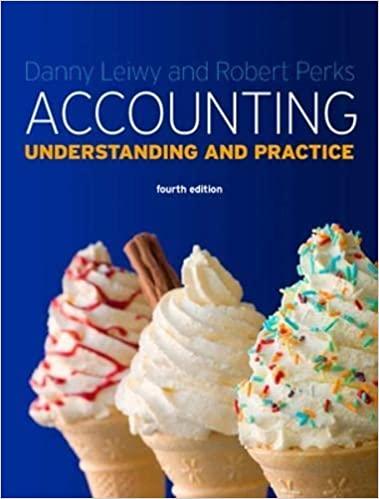Question
Unless otherwise specified, only the following rules for taxation of corporate profits will be relevant, other taxes can be ignored: Accounting rules on recognition and
Unless otherwise specified, only the following rules for taxation of corporate profits will be relevant, other taxes can be ignored: Accounting rules on recognition and measurement are followed for tax purposes. All expenses other than depreciation, amortisation, entertaining, taxes paid to other public bodies and donations to political parties are tax deductible. Tax depreciation is deductible as follows: o 50% of additions to property, plant and equipment in the accounting period in which they are recorded; o 25% per year of the written-down value (i.e. cost minus previous allowances) in subsequent accounting periods except that in which o the asset is disposed of; o No tax depreciation is allowed on land; The corporate tax on profits is at a rate of 28%. No indexation is allowable on the sale of land. Tax losses can be carried forward to offset against future taxable profits from the same business. Value Added Tax Country X has a VAT system which allows entities to reclaim input tax paid. In country X the VAT rates are: o Zero rated 0% o Standard rated 15% o Exempt goods 0%
Toby Naidoo, a resident of the Republic, converted his hobby, the restoration of old furniture, into a full-fledged business. A feasibility study revealed that there was a demand for a business of this nature. In the past, Toby restored furniture for friends, charging only an amount for the cost of his materials. On 31 August 2013, Toby owned three lounge suites and four dining-room suites that he had restored. Toby resigned from his employment on 31 August 2013. He started his business the following day. Toby is 50 years old. The following information relates to his business for the 2013 year of assessment: R Cash sales (notes 1 and 2) 701 100 C Purchases of furniture from vendors (note 3) 143 640 Purchases of furniture from non-vendors (during the first three months of trading) and paid for in cash 112 860 Purchases of wood, leather and other materials 56 430 Bank charges 1 368 Page 7 of 10 Legal expenses for advice concerning his business structure 3 078 Lathe purchased on 1 September 2013 37 620 Other tools purchased on 1 October 2013 46 170 Fuel expenses 6 840 Rental of business premises 7 182 Repairs to motor vehicle (October 2013) (note 4) 5 130 Interest paid 4 446 Salary paid 36 936 Entertainment 2 736 Trade licence (1 September 2013) 399 Closing stock finished goods 39 000 Additional information: (1) Toby inherited a lounge suite from an aunt during January 2013. According to the estate account, the value of the suite was R7 500. This was in excellent condition. He sold it for R12000 a week after its receipt. This R12 000 is included in the R701 100 total for sales (see above) (2) Except for one, Toby sold all the lounge suites and dining room suites that he owned before he started the business. The lounge suite that was still on hand on 28 February 2013 had an estimated value of R15 000. The lounge and dining-room suites that Toby owned when he was restoring furniture as a hobby, each had an estimated value of R12 600 on 1 September 2013. Toby estimates that he spent on average 17 hours of his time on each suite. He charges his labour at R500 an hour. (3) Abries purchases from his suppliers, who are vendors, are paid within 30 days after the statement date. All other purchases and expenses are paid in cash. (4) Abries private motor car that he uses to the extent of 70% for business purposes had to be repaired. Required: 3.1 Make full calculations of the VAT payable for each tax period from 01 September 2013 to 28 February 2013, assuming that the last tax period will end on 28 February 2013. Also, assume that all business receipts and accruals and expenses, except for the legal expenses that were incurred during September 2013 and except when otherwise indicated, occurred evenly throughout the period. In you answer, you should indicate what methods of payment Toby may use and the date on which each type of payment should be made. Also set out the provisions that may apply should the input tax exceed the output tax. (Assume for the purposes of the requirement that Toby is registered for VAT as a two-month VAT vendor and all amounts include VAT, where applicable.) (15) Page 8 of 10 3.2 GH is registered for VAT in Country X and is partially exempt for VAT purposes. GHs sales for the last VAT period, excluding VAT, were: Goods at standard rate: R15,000 Goods exempt from VAT: R10,000 During the period GH purchased materials and services costing a total of R12,075, including VAT at standard rate. These materials and services were used to produce standard rated goods and exempt goods. Assume that GH had no other VAT related transactions in the period. Calculate the net VAT due to/from GH for the VAT period.
Step by Step Solution
There are 3 Steps involved in it
Step: 1

Get Instant Access to Expert-Tailored Solutions
See step-by-step solutions with expert insights and AI powered tools for academic success
Step: 2

Step: 3

Ace Your Homework with AI
Get the answers you need in no time with our AI-driven, step-by-step assistance
Get Started


